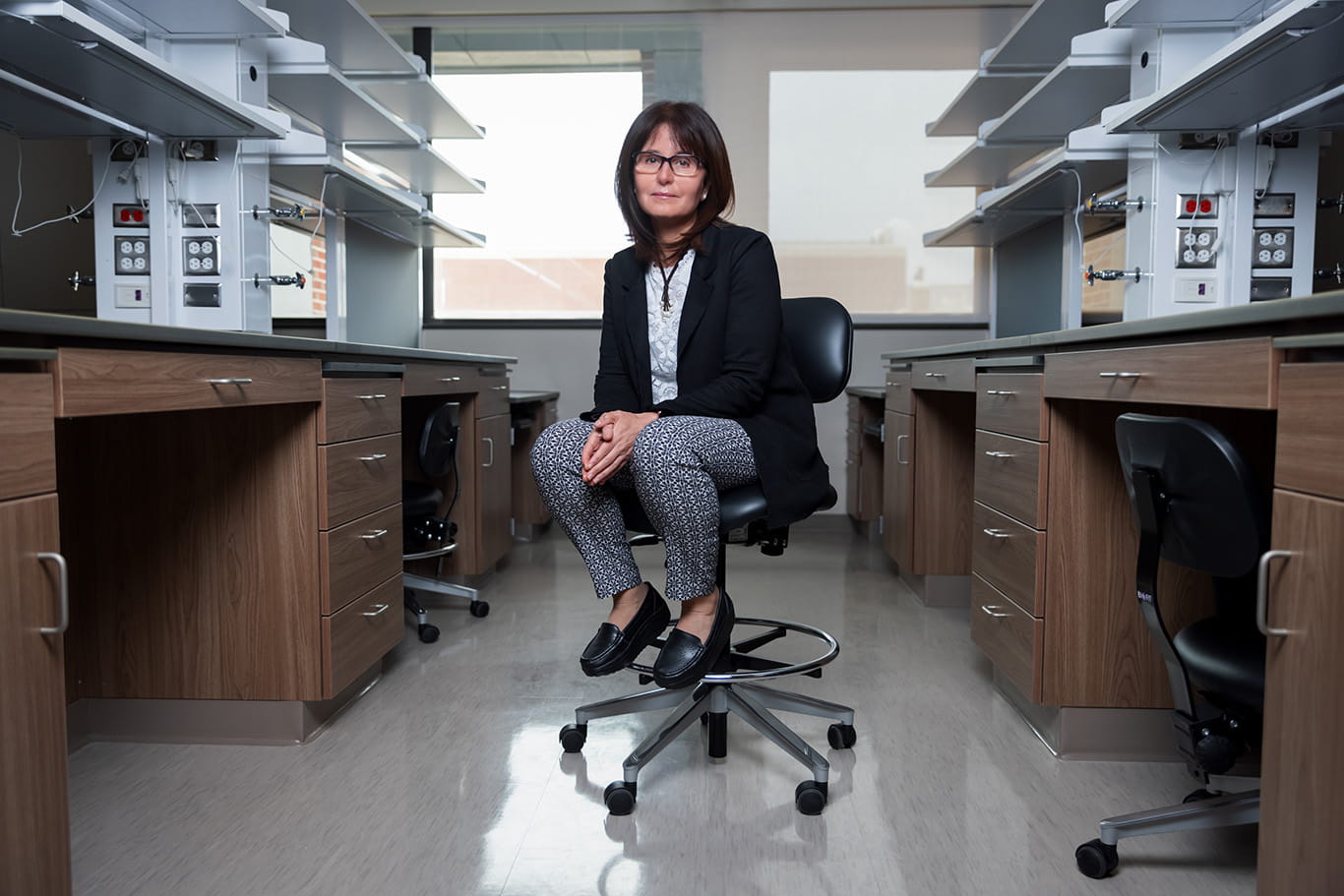THAT HANDS-ON experience that makes Lee confident Salman can place the Brown Center and the School of Medicine at the “bleeding edge” of cancer treatment. And it will happen soon. Salman, who started in November 2021, brought her trial with her. By year’s end, up to 10 patients with lymphoma will receive CAR T cells manufactured in Indianapolis.
That will be a milestone. Yet the real promise—and thorny challenge—of CAR T and immunotherapy rests in using it to treat solid tumors, such as triple-negative breast cancer. “We simply don’t have enough approaches,” Salman said. “That needs to change.”
Precise targeting remains the problem. How do you focus a horde of so-called ninja cells so they wage battle only against tumors, while sparing healthy tissue? We can live without B cells, Lee notes, but not without a brain or lungs.
Lee sees thymoma as a starting point. Just below the breastbone, the thymus is where T cells grow and mature. The gland increases in size until puberty before shrinking and turning to fat. “It’s dispensable,” Lee said. Because it educates T cells for specific functions, CAR T cells directed there won’t go rogue.
While thymoma is rare, affecting just 500 people in the U.S. annually, it’s tough to treat. Developing effective immunotherapy would do more than expand options for patients.
Reaching lofty goals for difficult cancers requires targets—and researchers to discover them. That’s where Brown’s generosity comes into play: providing Salman with funding to bring more talented scientists to Indiana. But there’s competition from other schools and start-ups awash in capital. “You have to convince them that they get the opportunity to build something really cool,” Lee said.
Once Salman has the people in place, she envisions the Brown Center inverting the conventional worldview of cancer research that focuses on a single disease. Immunotherapy is “disease agnostic”—a single target might be the solution for multiple cancers.
And researchers at the Brown Center will work along a spectrum. One scientist may find a target and pass it to another lab focused on understanding its structure and role in disease. That blueprint could go to a lab that specializes in building CARs and gathering exploratory data. “That’s the essential part,” Salman said. “We still have too many silos.”
VICKI GRAVES IS eager to get started.
Shortly after Brown made his gift, Graves oversaw a transformation of a roughed-out space on the third floor of University Hospital into a facility that could make a living drug. Today, it is modest in size: two suites, four incubators, and 19 staffers. Still, the School of Medicine is on par with regional peers. At capacity, the facility could make CAR T cells for 70 patients each year.
Even as it awaited a leader like Salman, the facility was useful. Staff help other researchers flesh out roadmaps to make CAR T cells. They assist with preparing CAR T cells for pediatric patients at Riley Hospital for Children. And there’s a project to make a “cell-free” product to treat ALS.
“We’re not sitting on our hands,” said Graves, who is director the facility. “We’ve been ready.”
That wait, though, was the product of upstream personnel needs, including Lee’s recruitment and installation as a successor to Patrick Loehrer, MD, as director of the Simon Comprehensive Cancer Center.
Now that Salman is here, her clinical trial stands out as a watershed moment. “It’s going to be the first cellular product we’ve been able to manufacture all the way through,” said Emily Hopewell, PhD, director of the Cell and Gene Therapy Manufacturing Facility.
IU still needs FDA approval. It must show that its Indianapolis facility can read and carry out the same recipe used in Louisville. At 90 pages long and written for someone else, that’s not as simple as it sounds. But engineering runs, which take a minimum of six weeks, are underway.
Helping advance the timetable, though, is that every step of the process—cell collection, receptor creation and manufacturing, and patient care—can unfold in one place. At the current pace, Hopewell said, IU could be preparing CAR T cells for patients by late summer or early fall.
To help advance immunotherapy, contact Amber Kleopfer Senseny at akleopfe@iu.edu.
